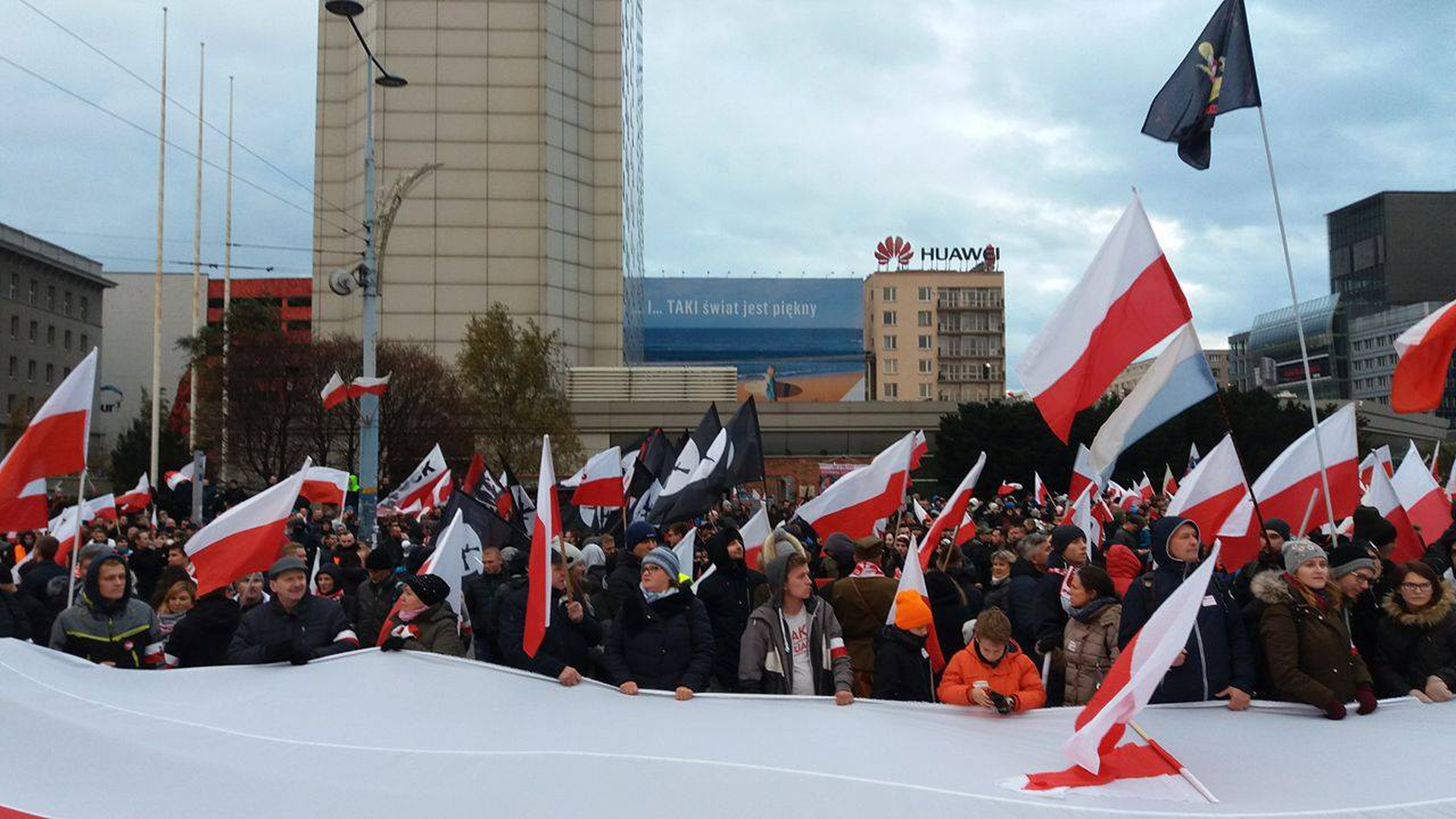Poland's annual Independence Day march has become a focal point for right-wing religious nationalism. How did we get here?
The weekend of November 11th saw the international media focus on Poland’s annual Independence Day march like never before, presenting events as a sudden and unexpected descent into open displays of fascism on the streets of Warsaw. In part, it is true to say that nationalism and traditional values are being centred in a way the nation hasn’t seen for almost a century, but in fact this year’s event was attended in lower numbers than at any point in the past few years. Nevertheless, no other European nation has seen such a large gathering featuring chants and banners against Islam, the LGBT community, the supposed ‘Jewish lobby’ and every other talking point of note for the world’s far-right, and it is vital to take note of how Poland became the venue for this rally of hate, both to fight it in Poland and as a lesson for others. Let’s try to present an accurate image of what is happening in Poland, how we got here, and what about the march was quite so unsettling.
Ascent to the Promised Land
Poland is one of the Warsaw Pact nations which clung most enthusiastically to the promises of freedom through markets that were presented throughout the 80s and 90s, a set of promises we can consider reaching their full potential by 2004’s accession to the EU. The idea was, spend the 90s going through hardship (Shock Therapy and currency devaluation), then by the 2000s we can be a full European partner, mature and spoken of in the same voice as perhaps Denmark or Ireland, if not the one of the really big hitters of the continent.
Whence, then, this inferiority complex, this need to be seen as a real country? Aside from simple population considerations, the size of the Polish diaspora has been instrumental in fostering an image in the Anglophone world of a country being held back from greatness by successive occupations – by the Swedes, the Austrians, the Nazis, the Communists – and that if only Poland were allowed to compete on an even footing, we’d be part of the West at last. If you want to test the depth of this concern, ask a patriotic intellectual whether Poland is Eastern or Central Europe – an apparently insignificant geographical distinction to the outsider, but the source of much soul-searching and often met by emphasising historical links with France, Italy and Britain rather than Russia or the other beasts over ‘that side’.
Even our timezone is indicative of this – sitting in Krakow in mid October, pitch darkness outside at half four in the afternoon, you wonder if we might be better off joining Romania or Ukraine in the +2 zone, yet the proposal with most support behind it suggests abandoning Daylight Savings altogether, a fudge to avoid facing up to the realities of geography. In other words, this sentiment runs deep.
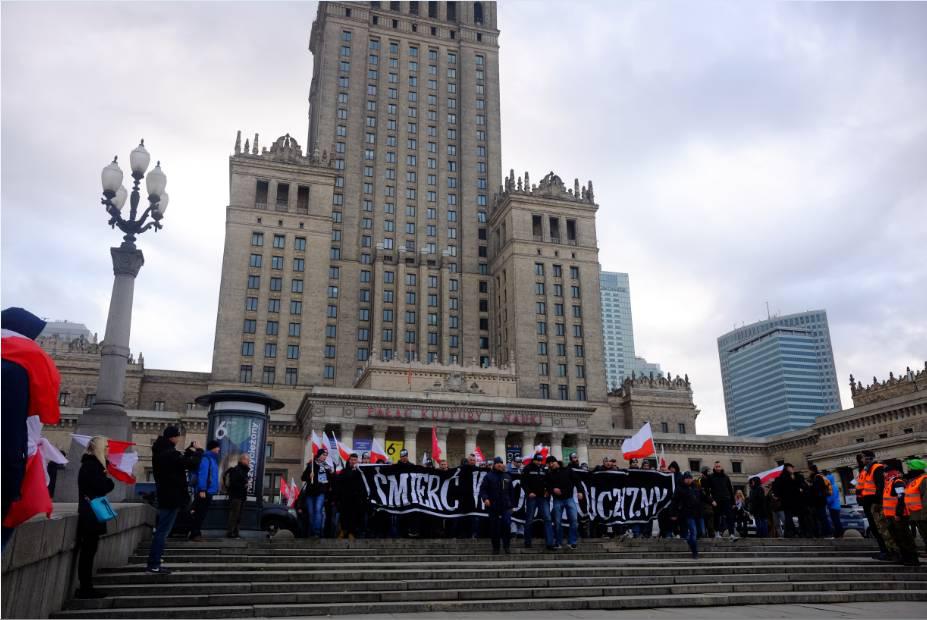
By the 2000s, the economy had begun to stabilize, governments had begun to last longer than 12 months, NATO membership had been secured and Warsaw’s skyline acquired a couple of new skyscrapers to rival the Palace of Culture for blotting out the sun. We were on the way, and a referendum, if poorly participated in, overwhelmingly confirmed the terms of EU accession. Desperately-needed finance for infrastructural improvements began flooding in, Polish workers travelled west and variously made money to send back home or set up lives in their host nations. Things were going very well, and the country became a symbol of the image the Union wished to present to the wider world - a benevolent concord helping the A8 nations who joined in 2004 to modernize and stand on their own feet. Even the banking crisis of 2008 failed to have a significant impact on Poland, and the related Euro crisis indeed helped it to improve its relative standing in the European periphery
[divider]
Social Concerns not Economic Instability
So how does this fit with what amounts to a neo-nazi rejection of ‘Western’ values such as we saw in vast numbers on Saturday? Fascism is normally understood as a reaction to economic instability and unemployment, both of which are currently at their lowest levels in Poland’s post-89 history. Instead, it is entirely social concerns which are informing this turn to the right.
For one, we can look at the failures of the Polish political class. After the seemingly mandatory decade for post-socialist nations in the region of successive governments consisting of reformed communists plus various coalition partners, the biggest political force of the early EU days were Platform Obywatelska (PO), economic liberals who dared not shake things up socially too much in a country where it has generally been considered political suicide to run on a platform which promises to liberalise abortion or gay rights laws since the emergence of the Catholic Church as a significant social influence.
PO are a party who could only thrive in a newly-capitalized economy – promises to improve your life with higher purchasing power and ease of running businesses, and democratizing consumer choice. In practice, we know this means accelerating economic growth while removing the checks and balances that ensure these new riches are spread equitably across society, and it is here that we begin to see the reasons for the rejection of the longed for, prayed for West. In short, being told that everything is great when you can’t afford to live in the home you’ve had for 50 years, or watching restaurants and business spring up around you that you could never afford to visit, perhaps leads one to start listening to the guys who are telling you that everything is, in fact, terrible. Enter PiS. Listen up, libs – this is an important lesson.
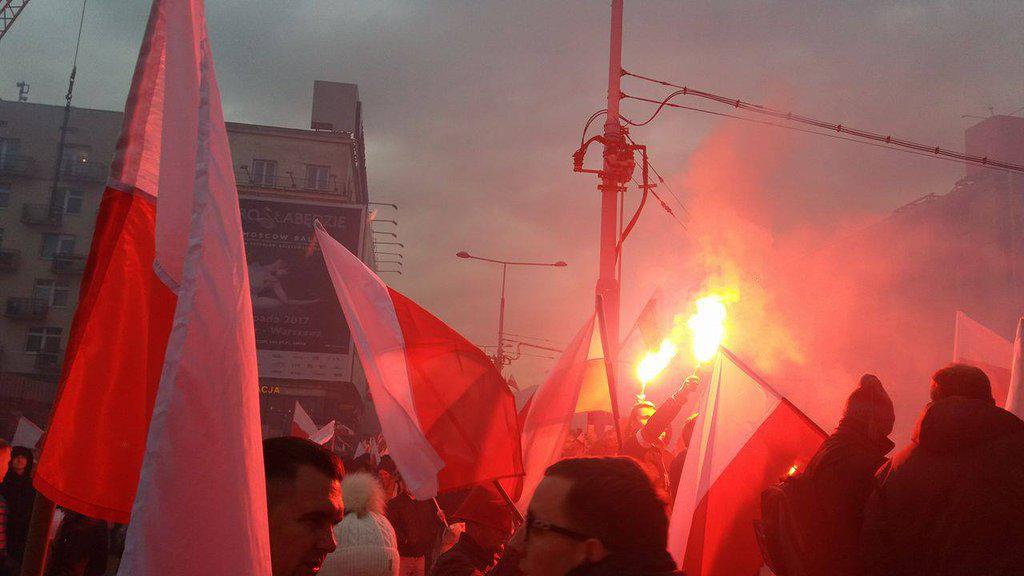
The PiS Electoral Coalition
Prawo i Sprawiedliwość/Law and Justice (PiS) emerged from one of many post-89 splits within the Solidarność movement, and sought to ride a wave which tied Polish national identity to Catholicism. Their social policies have always reflected those of their senior members, being straight along the lines of conservative (JPII-style) Catholics: abortion is always wrong, family values are key. When it came to the 2015 election, they were able to stitch together an electoral coalition of the devout believers in the PiS message with those who wanted a benefits system that better reflected the country’s new prosperity, as well as those conspiracy theorists surrounding the Smolensk plane crash which killed the party’s previous president, Lech Kaczyński. It is hard to understate the importance of the latter group when considering the sense of fear and embattlement running through modern Polish politics – in part thanks to the election of a government who openly endorsed and pursued these conspiracy theories, we now have regular inquiries, involving the aeronautical experts of several nations, into what really happened, each apparently quietly suppressed after suggesting that pilot error and weather conditions were indeed to blame for the crash. A monthly vigil and mass, led by de-facto country leader and PiS chairman Jarosław Kaczyński, continues to this day, helping to institutionalise this morbid obsession as a kind of national cult – those who oppose it can be dismissed as Russia sympathisers or anti-patriots, blind to the desires of foreign powers to interfere in Polish politics.
This trifecta of Catholic traditionalists, those who wanted a better share of the EU subsidies and, let’s call them Smolenskites, swept them to power in the first single-party majority government since 1989, and will set the direction of Polish society for the foreseeable future. However, bear in mind that PiS approached the election in a smart, understated manner – divisive figures such as Kaczyński and future defence minister Antoni Macierewicz (coincidentally the most keen advocates of the ‘Russia did Smoleńsk’ theory) were sidelined in campaigning in favour of bland grey mice, reliable, without notable political histories and unlikely to say anything overly controversial. It is unfair to say PiS were elected on an overtly nationalist platform – less Make Poland Great Again, more of a dogwhistling, Take-Back-Control style campaign. Those voters looking for an openly anti-refugee ticket tended towards the loose coalition headed by Paweł Kukiz, former singer of a derivative rock band named Piersi (Breasts), who presented an anti-politics ticket and as such were unencumbered by the demands imposed by a need for electability among the wider masses. Broadly, older people and those with families went for PiS, younger, single people, especially men, voted for this collection of tax protestors, populist reformists and quasi-fascists.
The Rise of “Poland B”
What PiS did fairly successfully was to enfranchise and seek out votes in a sociological constituency habitually referred to as Polska B – those predominantly in the east of the nation where incomes have largely failed to keep pace with those in the cities and more industrialised west. Partly for reasons of historical border shifts, partly due to the location of natural resources, every one of Poland’s richest towns lies west of Warsaw, and whether through infrastructural investment or promotion of local businesses - this is not something that any ruling party sought to ameliorate following EU accession and subsequent economic prosperity. Villages and small towns in Silesia or Pomorskie now feel decidedly mitteleuropaisch, whereas those around Zamość or Olsztyn in the east have more in common with rural areas of Ukraine or Belarus. To illustrate – villages around Krakow or Poznań use horses for leisure and tourism, but it is not a rarity to see them still being used in the east as working beasts. PiS actively sought out these forgotten voters – a vital move regarding their eventual success, considering Poland is a nation of 36 million with only one city of more than a million inhabitants. The populist rural and small town constituency, ignored under the People’s Republic government (and never collectivised as in the USSR, instead they were left to more or less get on with their own business), finally had a party promising to speak for it in Warsaw.
The benefits system is a good way of understanding the shift in social perceptions since the elections of Andrzej Duda as president and PiS as the ruling party. The average PiS voter tends not to be in full agreement with the entirety of their programme – it is common to meet people who like their pension or child benefit (€120 per month for every child after your first, over a quarter of the minimum wage at the time of its introduction) reforms, introduced by PiS, without necessarily agreeing with their strict Catholic interpretation of abortion or family law, for instance. In the aforementioned small towns and villages of the east, this money goes a significant way to bridging the economic gap between Przemysl and Polkowice. But because of the complete political failure of any significant opposition party to provide anything comparable in terms of social provision, it means those people will continue to vote for PiS, as they aren’t gay, or in need of abortions, or so on.
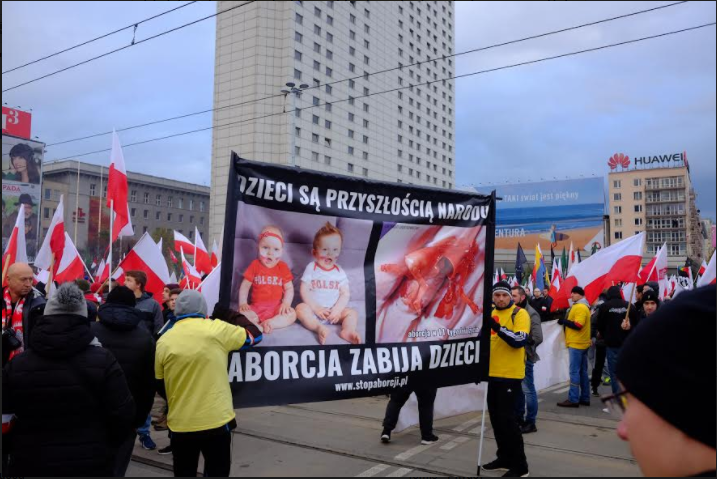
The Conservative Influence of the Diaspora
In addition, neither PO nor newcomers Nowoczesna dare to take on the Church socially for fear of losing votes at the instruction of an institution they themselves, and their predecessors, helped to install as a significant powerbroker in Polish society. This is also why the Coalition for the Protection of Democracy (KOD), on the whole run by PO and Nowoczesna, have and will largely fail in their aims – the message is purely negative. They are an opposition in the narrowest sense of the word, capable of saying that something is bad without offering a positive alternative. The legitimately progressive alternative is the Razem party, who in 2015 attracted 3.6% of the vote – 1.4% short of parliamentary representation. One of the party’s biggest problems is the extremely negative perception of anything left-wing in Poland, which again brings us back to the diaspora.
Diasporas tend to be conservative forces, given the communities’ need to rally around a calcified, idealized set of beliefs about the abandoned homeland. Religion has a part to play too, as an unchanging institution which provides both continuity with the way of life back home as well as a ready-made group of people to meet and talk with about the difficulties of adjusting to the new country. Inevitably, given that the expatriates tend to find themselves financially better off, and therefore can fund projects and groups working back home, these attitudes can seep back to the nation of origin. Given Poland also has nearly 175,000 registered expatriate (mostly US and UK) voters, eligible to vote in presidential, parliamentary and European elections, this group can and has had tangible impact on politics in the country. Alongside actual government funding of NGOs and pressure groups, diaspora cash has still overwhelmingly been directed towards anti-communist and/or pro-Catholic groups, again emboldening the role of the Church in political life. The Solidarność trade union is a perfect example of one such group, and this helped to set the tone of post-89 politics.
The Catholic Church, The Communist Era and Antisemitism
The Catholic Church has a difficult and often shameful historical role in antisemitic incidents and beliefs around the world, and it is no different in Poland. There are statistics, notably explored by Jan Thomas Gross in his 2001 book ‘Neighbours’, showing a tendency for increased antisemitic violence on Sunday afternoons during the inter-war period, and to take a particularly unsettling example, both during incidents in the lead-up to and in the aftermath of the Kielce pogrom of 1946, senior Polish Catholics at best refused to condemn the attacks, and at worst openly blamed the Jews themselves for inviting the violence upon themselves. It is important to remember that major Jewish Polish figures such as Marek Edelmann have insisted that antisemitism was not the motivating factor behind every such attack, instead blaming “contempt for…human life, plain meanness”, and it is notable that Poland was indeed one of the most welcoming nations for Jews in the early 20th Century. However in spite of its relative infancy, and regardless of motivation behind individual atrocities, antisemitism did persist in Polish society beyond the Second World War.
The PRL (Communist-era) government that came after also deserves some of the blame, given their failure to deal adequately with antisemitic elements within the police and related public institutions, as well as never quite coming to publicly accept the incidents of Polish gentile collaboration in elements of the Holocaust. In addition, Poland was perhaps the most lenient European Communist nation with respect to religion, which led to the Church inevitably becoming a rallying point for anti-communism. It is not hard to see how this marriage of government opposition and religion, combined with official foot-dragging regarding the prosecution of antisemitism, led to the myth of ‘Judeo-Bolshevism’ finding a welcoming home in a country seeking to apportion blame for the hell of the previous few years.
It indeed remains a legitimate criticism of many of the European Communist nations that little was done to properly address various racisms that had existed prior to 1945 (though strangely not one that the more fixated groups such as Victims of Communism seem to adopt), Polish antisemitism, Czech antiziganism or anti-Asian sentiment in western Russia are not social ills that suddenly emerged fully formed in 1989. What has been particularly toxic in Poland’s case is its combination with a somewhat unique sense of national persecution, a perception as being the Christ of Nations, suffering under successive occupations – again, propagated by misty-eyed departees of the post-war years who are more capable of the cognitive dissonance necessary to view 1945-89 as a foreign occupation on a par with that of the Nazi years. This is not a view, incidentally, which took particular hold in domestic Polish consciousness until well into the 21st century – and again, this is the direct influence of the diaspora, who had incubated perceptions increasingly out of touch with reality across the years that visiting was a more complicated process, and had become too foreign to gain any real sense of the actually existing situation by the time they were able to travel with ease. The now-famous banner from the Independence Day march displaying a proud eagle defiant between crossed-out hammer and sickle and swastika symbols, seized upon as proof of lack of far-right intent at the march by a defensive PiS government and clueless western centrists alike, is a product of this view.
PO’s collapse of 2015 can therefore be viewed as part of this same notion – thanks to their insistence on everything being fine in Poland, PiS were able to present the aforementioned worsening at the bottom as part of a new, economic occupation, this time by the big powers of the EU. Add to that an at-best cynical and at-worst downright delusional appropriation of blame for the 2007 Smoleńsk air crash to the old eastern enemy committing a second run of the Katyń massacre, and we see how PiS were able to combine votes based on personal economic circumstances with those of nationalists who wanted a more realistically-electable vote than the outright fascist parties such as Ruch Narodowy (National Front).
‘A New Generation is Coming’
To consider the march itself, then, and first a brief history. The date was reinstated as a national holiday in 1989, but was largely considered a minor day, with perhaps a few flags hung outside buildings, for the following 20 years. It wasn’t until 2008 that neo-fascist group Obóz Narodowo-Radykalny (National Radical Camp, ONR) organized the first instance of what would become the 60,000-strong march we saw last Saturday. This first march, like others with a more explicitly racist tone that they organized at the time, was attended in the dozens, and most of the residents of Warsaw would have had no idea even of its existence. Moves were made around this period to outlaw the group, but largely collapsed due to a mixture of judicial incompetence and occasionally, outright political unwillingness to place what was seen as extreme, but valid, Polish patriotism in the same category as the KKK or swastika. In some instances we can ascribe this to a reluctance to give publicity to a group making internationally embarrassing statements about Jews and Muslims, but in others there has been clear collaboration between the group, its sympathisers and elected officials. This may have been tacit at first, but the Kukiz block elected in 2015 contained members of the National Front and ONR’s youth division, Młodzież Wszechpolska (All-Polish Youth), making any attempt to outlaw or restrict their activity that bit more difficult. Indeed, it was at the insistence of a fascist Sejm representative who’d found his was into parliament via this block that the logo of the ONR was removed from the Polish police handbook on hate symbols.
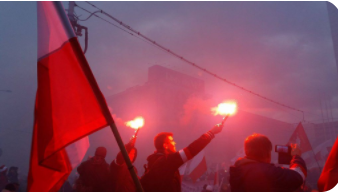
Following the first march of 2008, the next few years saw a slow rise in the number of groups taking part in the organizing committee of the march, many of whom shared a common involvement with high-profile football hooligan firms. This is perhaps the key shift that lent a more organised, militaristic tone to the event, not to mention those distinctive flares. In addition, the nationalistic right took advantage of the shock of the Smoleńsk disaster to build political momentum against PO, and by extension their perceived European liberalism (more extreme suggestions involved former president Donald Tusk being a Russian sleeper agent, but these have gained little traction among the general populace). Herein lies the oddity of Polish politics however – at no stage had PO resembled anything like a liberal party in the sense a western European parliament would understand that term. For a British comparison, they are somewhere between right-wing Liberal Democrats and the more libertarian Conservatives. However, PiS and their ideological allies managed to equate rejection of this economic liberalism with a broader rejection of those socially liberal values the EU portrays itself as a promoter and protector of. Thus, the march began to see a mixture of all these disparate elements – the nationalists, people defending Catholic values as essential to Polish identity, and those annoyed at the failure to deliver a promised upturn in living standards, mobilised by the right thanks in part to the persisting toxic associations of anything left-wing in Poland.
2012 was the year where the indications of the march’s shift in scope and tone became impossible to ignore. For the first time the route began from its now annual muster point of Dmowski Roundabout, named for the inter-war Polish anti-semite, bitter enemy of Jozef Piłsudski’s multiculturalist policies and ‘father of Polish nationalism’. This was the first year in which the march began to resemble a football crowd, albeit with some apparent infighting after a group broke off to begin a small riot complete with flares and firecrackers. Whatever the agreements formed after this, it was clear by the following year’s event that the march organisers had rallied behind a notion of showing their ownership of the capital, and by extension the nation. In a preview of what was to become two of the next government’s obsessions, a decorative rainbow to promote LGBT rights was burned to the ground, and this time the riot had a target – the Russian Embassy. In addition, a frightening sign of official fecklessness came during an attack on an anarchist squat, known for hosting cultural events and one of the few prominent left spaces in Poland. Police stood by and allowed the marchers to throw firebombs and knock out windows, leaving the squat residents to fight off the nationalists themselves.
Throughout this period there was a strange dichotomy within the march – its marketing and format was increasingly nationalist in tone, with slogans being chosen for each year advancing from the potentially fascist-sounding ‘A New Generation is Coming!’,to the fairly straightforward ‘Poland for the Polish, The Polish for Poland’ and a more dogwhistling, Battle of Vienna-invoking ‘Bastion of Europe’. Yet there was still a clear element who wished to take this in an even more more upfront direction, given the frequent fights between march security and the most extreme attendees, and this is a hallmark of modern Poland’s – let’s call it shy fascism, in the way the British talk of ‘shy Tories’ – do everything possible to invite this sentiment, then act surprised when it turns up. Many Poles will balk at suggestions that supporting groups such as ONR mean they hold fascist or nationalist views, in part due to the ongoing self-mythologising as uniquely suffering victims of nazism – indeed, a polling company found last year that only 16% of those who support ONR and MW consider themselves nationalists. It isn’t a sentiment unknown to a British audience, of course, that having fought a far-right enemy at some point in the past automatically protects one from being themselves far-right.
“We Want God”
On to this year’s event, then. The title ‘We Want God’ brings us full circle, the resurfacing of the notion that Polish identity is inherently Catholic, and to that end our land must be protected from Islamic, Jewish, Atheist or even Protestant influence. The election of Donald Trump and a related rise of organised, open fascism in the USA, and therefore inevitably the world at large, meant that organisers were able to add a sense of international legitimacy to proceedings – domestic legitimacy having been achieved the previous year with the attendance of President Andrzej Duda. Fascist and white supremacist agitators from abroad were invited – Forza Nuova, Jobbik, whatever Tommy Robinson is representing these days, even walking antifa meme Richard Spencer, though the latter was refused permission to enter thanks to the need to maintain an air of deniability about the event’s more unpleasant messages.
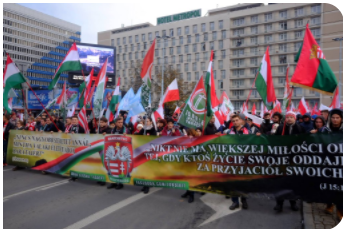
Is it fair to say, as has been claimed, that 60,000 fascists and white nationalists marched in Poland last Saturday? The details of previous years’ events are hardly secrets to the average Pole, and the fact that every hooligan group, almost all of whom in Poland are on the political spectrum between Patriotism and Outright Fascism, will sing ‘Everyone to Warsaw’ during the match preceding 11th November each year, means that all attendees are aware of certain aspects of the march. Everybody knows there is a fair chance you will be marching alongside a banner demanding ‘Europe must be white’, or caught up in a chant of ‘gays and lesbos, the whole of Poland is laughing at you’. And yet, organisers and the government themselves have been keen to write off the more extremist banners and participants as a small minority, not at all indicative of the average attendee, a family-loving patriot who has no violent intent. The organisers themselves are claiming they removed the openly racist banners, although there is visual evidence to the contrary, and indeed one of the march’s main organisers stated before the event that they refuse to censor anybody. In short, then, it appears to require incredible good faith to believe that even a handful of marchers would have been unaware of the history and previous activities of the event.
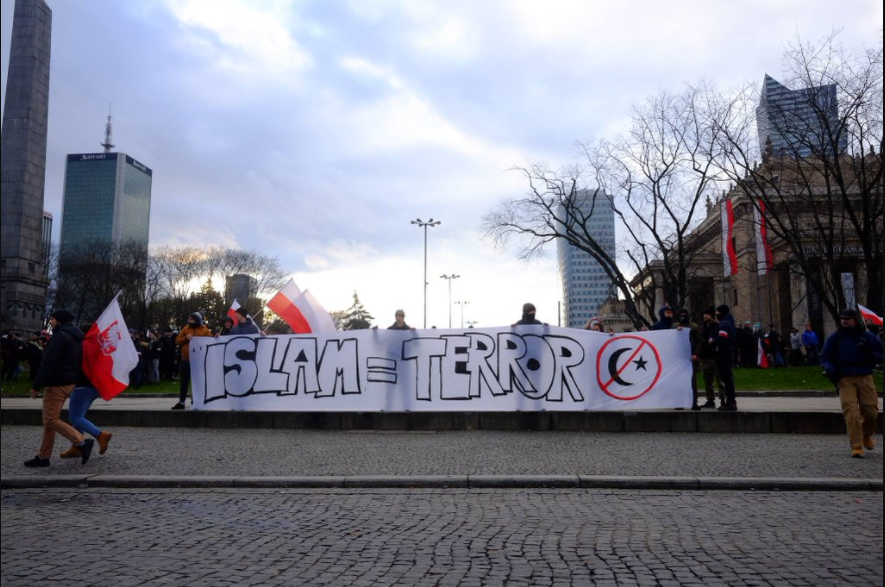
The question we must ask is how indicative of Polish society at large these 60,000 extremists and potential extremist sympathisers are, and whether the country is genuinely on the precipice of total fascism. Much depends on the wider world – Islamophobia is demonstrably a Western influence, given the miniscule numbers of Muslims living in the country. But this is not to suggest that it is in the least bit benign – attacks are steadily rising on Muslims and anybody suspected of being Muslim – the sheer lack of existing or potential influence of Islam on Poland suggests that it is less a targeted hate and more a weaponised fear of the external. Put simply, and without absolving Polish Islamophobes of any responsibility for themselves, Poland started to fear Islam when the US began its War on Terror. Certainly, the small community of Muslims, descendents of Tatars from centuries ago and long native to Poland had experienced little in the way of notable oppression (and still do not).
However, a survey of marchers in 2015 found that of four chosen minority groups – Jews, Muslims, Roma and homosexuals, the participants felt the least accepting of Muslims (in Polish society at large the same study found lowest acceptance of homosexuals and Roma, though still higher in all categories than that of march participants). The right in Poland, and similar countries, have been able to utilize the panics in the US and other western nations to demonstrate what could be, if we dare to relax in the fight for our identity for only a moment. Similar is true of the antisemitic element of modern Polish nationalism. The actually existing Jewish communities are far less likely to have their windows smashed in than the average LGBT or women’s rights support centre, and again the real target is outside agents apparently desperate to influence Polish politics. Of course, this makes the racism no less pernicious, nor does it mean it could never turn into something more violent if its propagators ever so required. However, it does hopefully begin to explain how it is possible to have, in the inaccurate words of one clueless western commentator regarding Ukraine, ‘antisemitism without any Jews’.
One of the secretaries of All-Polish Youth summed up the tricky relationship between mainstream Polish politics and this wave of extremist sentiment, by tweeting “‘President: There is no place [in Poland] for xenophobia, nationalism or antisemitism.’ So how does Andrzej Duda explain photos on his Instagram popping up with the hashtag ‘Nationalism’?” The Catholic traditionalists of the government are inviting some awkward and aggressive elements into their broad church of the right, and it seems increasingly impossible that they will be able to control them forever.
Photos: © Max Edwards, used with permission
